The Entrepreneur Who Wants to Save Paradise
Douglas Tompkins—the founder of Esprit and The North Face—is using his fortune to build massive national parks in Chile and Argentina. But what he sees as philanthropy, local ranchers see as meddling.
Diana Saverin
Just a little to the north, Guido Vargas stared out his kitchen window. “He wants the water,” Vargas told me. “There’s more freshwater here than anywhere else in the world. They’re going to ship it to China.”
Later, in a town right on the border of one of Tompkins’s parks, Raquel Sepuilveda stood outside the post office. “I knew the valley when it was productive, and now it’s dead,” she said. “Now it’s the future refuge for the Jews. It’s the promised land for them.”
Fifteen years ago, in the June 1999 issue of The Atlantic, William Langewiesche wrote about Tompkins’s first major venture into conservation in Chile, describing both Tompkins’s idealistic vision and the infamy that had already shrouded him. The hostility has only grown as his conservation empire has expanded. Rumors now range from the conspiratorial to the phantasmagorical: Tompkins is creating a second Israel in South America; he is siphoning off the world’s last freshwater resources for other American millionaires; he is building bunkers for a pending nuclear war.
No one seems to believe what Doug Tompkins and his wife, Kris, are actually doing: They have purchased enough land in Chile and Argentina to equal an area the size of nearly two Rhode Islands, and they plan to donate these ice-coated peaks, red-rock canyons, and coastal volcanoes to the respective governments in the form of national parks. They have protected more land than any other private individuals in history.
In the United States, Tompkins’s name is rarely recognized until it is linked to one of the two apparel companies he founded: Esprit and The North Face. In Chile, however, mentioning his name can bring rage to the faces of even the most apolitical people. Kris’s name is less recognized and less reviled in the region, even though she is her husband’s partner in his conservation work. Before she became a full-time philanthropist, she made her own fortune as CEO of the outdoor apparel company Patagonia. Since leaving their industry jobs, the Tompkinses have started a host of organizations aimed at protecting the wild: The Foundation for Deep Ecology, Conservación Patagonica, Fundación Pumalín, Fundación Yendegaia, The Conservation Land Trust, and Tompkins Conservation.
In 2004, Conservación Patagonica acquired the Chacabuco Valley and has since been turning it into what the Tompkinses call the Future Patagonia National Park. It is this 178,000-acre plot of land that everyone in the region is now talking about. Once they bought it, the Tompkinses began their efforts to restore the land to the state it was in before humans exploited it. They sold almost all the 30,000 sheep and 3,800 cows that came with the property. They built several large stone buildings with wide, divided-light windows and pitched copper roofs. Their employees and volunteers removed more than 400 miles of fencing and pulled plant after plant of invasive species out of the ground.
Meanwhile, gauchos and locals in town puzzled at the couple’s desire to build stone mansions and bring back wild species. Tompkins’s tendency to drop out of the sky in his small red and white plane and his insistence that all guests and employees take their shoes off inside his buildings only added to the mystery. Few in neighboring towns were quick to trust their eccentric new neighbor—the organic farmer, the WASPy backpacker, the amateur architect, the billionaire entrepreneur, the high-school dropout, the former ski racer, the grizzled mountaineer, the bold whitewater kayaker, the daring bush pilot, the audacious land-grabber, the radical environmentalist, the would-be savior of the Patagonian wilds—Douglas Tompkins.
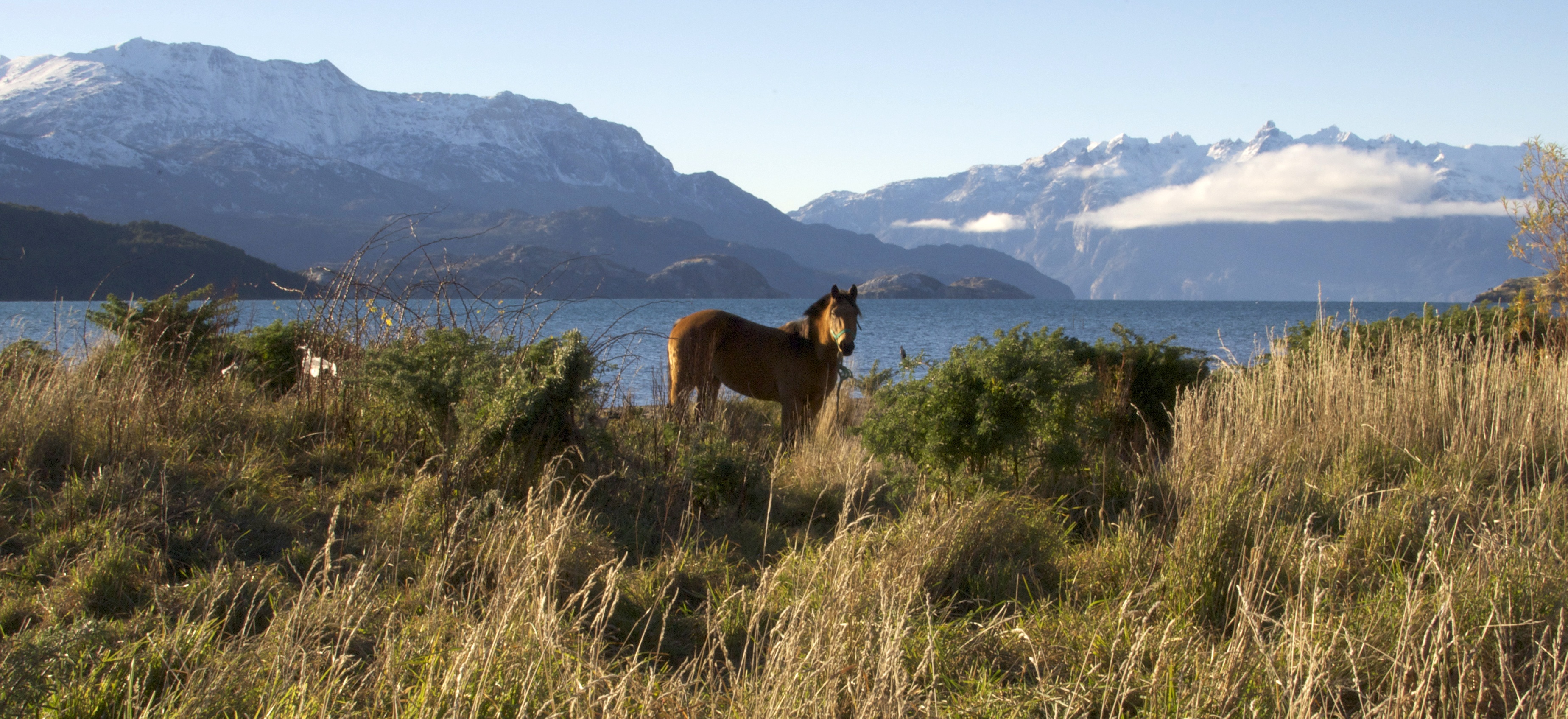
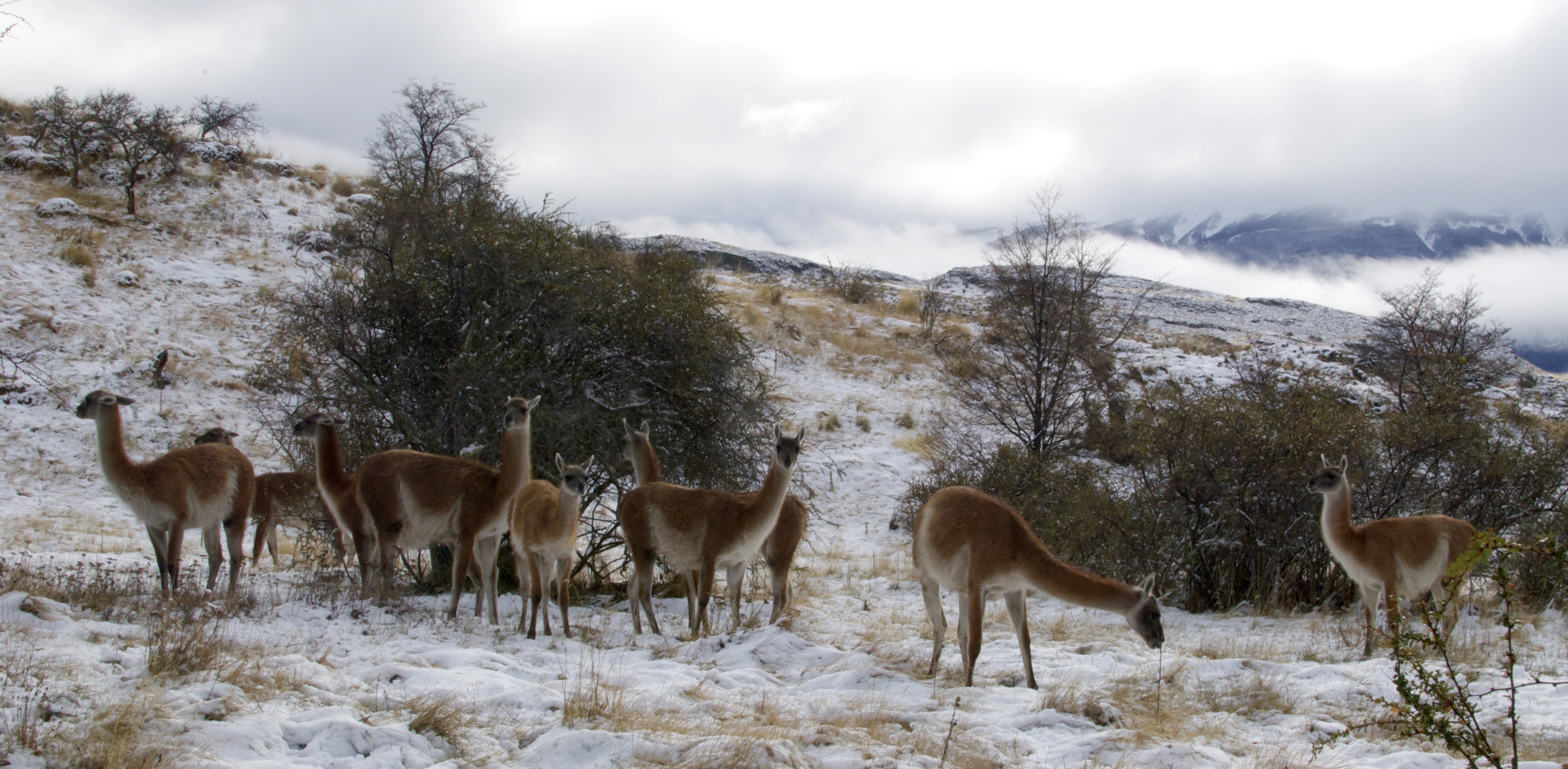
Before his days of Cessnas and large-scale conservation, Tompkins dropped out of high school and never went to college. In his late teens, he joined the Sierra Club and wandered west. He rock-climbed around Northern California, and was once picked up hitchhiking at Lake Tahoe by a woman, Susie, who became his wife that same year. His adventures took him south before his big move: He is now credited with being the first to paddle down 21 previously undescended rivers in Chile. His most famous journey south was material for the documentary Mountain of Storms, in which he drove a Ford van from California to Argentinean Patagonia with the Funhogs, a group of climbers that included the founder of the Patagonia clothing company, Yvon Chouinard. The Funhogs headed toward, and eventually climbed, Fitzroy, a mountain that had been climbed only twice before and whose silhouette is now the Patagonia company’s logo.
Between his traveling, climbing, skiing, and surfing adventures, Tompkins sold outdoor gear through a small company he and a friend had created, The North Face. The Grateful Dead played live at the shop’s 1966 opening in San Francisco. A Bob Dylan poster hung in the display window. Tompkins sold the company two years later for $50,000 and eventually joined his then-wife in the fashion industry with the company that would become Esprit. His environmentalism remained strong throughout his years in the fashion world. He and Susie brought Esprit employees on rafting trips to listen to lectures by Earth First! activists.
Tompkins’s conservation ethic expanded significantly in the 1970s and ’80s, during what his foundation describes as a “self-guided immersion in ecological literature.” With no college degree, he took a literary journey through the works of writers like Wendell Berry, Edward Abbey, Robinson Jeffers, John Muir, Henry David Thoreau, Aldo Leopold, and Gary Snyder. The Tompkinses often cite one particular Berry passage, which challenges the notion that human needs should come first: “We must change our lives, so that it will be possible to live by the contrary assumption that what is good for the world will be good for us.”
The work of Arne Naess especially engaged Tompkins. Naess was a Norwegian philosopher most famous for first coining the term “deep ecology” at a talk in 1972 and in a paper the following year. The “deep” refers to the “deep questioning” the “deep ecology” movement advocates. Unlike the kind of environmentalism that supports technical fixes and “business as usual,” deep ecologists hope to challenge values and practices in society—especially the overuse of technology and the fixation with economic growth.
Over a decade after Naess first uttered the term, he and another writer, George Sessions, celebrated John Muir’s birthday by camping in Death Valley, California. During this trip, they encoded the beliefs of deep ecology in eight principles. These central tenets declare that humans have no right to reduce the richness and diversity of life forms except to satisfy emphatically vital needs. They state that the human population must decrease for the well-being and flourishing of the nonhuman world. They also state the need for a shift in basic economic, technological, and ideological structures in order to reduce the human interference in the nonhuman world. The final principle states that “those who subscribe to the foregoing points have an obligation directly or indirectly to try to implement the necessary changes.”
Tompkins was so influenced by these ideas that, by the late 1980s, he had come to believe that the consumer culture he had helped promote with The North Face and Esprit was contributing to the environmental destruction he hoped to fight. He decided to implement what he saw as the necessary changes. Tompkins sold his stake in Esprit for an estimated $125 million and resolved to, as he puts it, “stop selling people things they don’t need.”
Tompkins moved to a small farm on one of his first park projects in Chile: Parque Pumalín. Unlike the yellow, rolling hills of low brush in the Chacabuco Valley, Pumalín covers 715,000 acres of dense and wet forest, carved by deep fjords, with mountains that drop steeply to the sea and islands that splatter across the surrounding bay.
While living in Pumalín, he often flew to another small farm he had purchased to the south of it. It is one of his and Kris’s “agricultural restoration projects,” where they repair and redesign degraded farms, building organic ones in their place to offer a model for neighboring farmers to emulate. During one such effort in the early 1990s, a visiting friend, Peter Buckley, the former CEO of Esprit who has since founded a variety of environmental activist organizations, came along. They soared together over the coast from the farm back to Pumalín, and as they flew over the lake-dotted coastline, navigating over a colossal snow-covered volcano, Volcán Corcovado, Buckley exclaimed at the beauty. Tompkins asked Buckley, “Why don’t we buy that place?” Buckley looked down at the Tic Toc river winding into the sea below and replied, “Why not?”
They eventually bought 208,000 acres in 1994, adding more a few years later. Much of the land surrounding theirs was federally owned. In 2004, Tompkins suggested to Chile’s then-president, Ricardo Lagos, that the Chilean government donate this federal land, along with Tompkins’s private land, and join the areas. Those 726,000 acres now comprise Corcovado, Chile’s sixth-largest national park.

One of Pumalín’s entrances is now in the town of Amarillo, where a few park rangers like Erwin Gonzalez are readying the park for turnover to the Chilean government. Gonzalez is a young man from Santiago with jeans and rubber boots who gave me a tour of the park in his pick-up truck. We started in town, where the Tompkinses have engaged in what the park materials call “Village Beautification.”
“Every detail you see on the houses was designed by Tompkins,” Gonzalez explained, pointing at a lacy maroon trim decorating the roof of a small A-frame house.
These “beautified” houses don’t belong to Tompkins. Amarillo simply happens to be a town at the entrance to Pumalín, so Tompkins has made a point of beautifying it. Through his work, one house made out of a shipping container with a chimney jutting out of its front window became a yellow-painted cottage with a white picket fence, a white entry porch, and white gingerbread fretwork. Tompkins has also beautified the homes of the neighbors, as well as the town’s gas station, school, supermarket, and bus shelters.
“The people were a little hesitant,” Gonzalez told me. “A gringo shows up and tells us our town is ugly? But now it’s going well.”
As Gonzalez indicated, Tompkins has taken many of the decisions about the design of these renovations into his own hands—the patterns of the houses’ trim, the colors of their fences.
“We ask, but it’s a little guided,” Gonzalez said, explaining their process with each home-owner. “‘How about we do these colors? These will make it beautiful. Does that sound good to you?’”
Gonzalez drove us out of town and into the park. He pointed out different campsites and parking lots amid the wet forest, explaining Tompkins’s process: Tompkins would draw a sketch of what he imagined for each aspect of the park—from the bends in the trails and roads to the arrangement of a campsite’s picnic tables and benches. Gonzalez and his colleagues would then build as fast as they could according to these drawings. Tompkins would later return to see his ideas embodied and give his stamp of approval or rejection. Rejection, in this case, might mean that Gonzalez and the other rangers had to scrap the progress they’d made and begun building anew.
Like many of Tompkins’s employees, the executive director of Conservación Patagonica, Nadine Lehner, once described this obsessiveness to me.
“That’s the thing about Tompkins,” she said. “He’s an abstract thinker, but he also brings it down to ‘Where should the toilet paper go?’ with a sense that that really matters.”
Gonzalez drove through the moss-cloaked forest for a couple of hours before taking the road that led us out of the park and back to town. The strip of pavement ribboned across an open field of grass below the cloud-feathered hills. On the side of the road sat Tompkins’s tiny plane.
Gonzalez stopped the car, jumped out, and picked up a carton of gasoline that one of the workers had littered on the grass.
“Doug would get mad,” he explained as he shut the car door.
Gonzalez mentioned that Tompkins often dropped out of the sky without warning—he had just been there on Monday. We walked into the office, and found Tompkins staring at his computer at one of the desks.
Tompkins is a slight man with wisps of white hair, bushy gray eyebrows, and deep-set dark eyes. He is smaller than I had previously imagined, and has a softer voice; I found myself whispering. When I asked him to speak with me about his various organizations, Tompkins became impatient and told me, “We have a website, you know.”
But when I told him I was interested in deep ecology and wanted to know the roots of his conservation work, his eyes brightened, and he leaned back in his chair, launching into what would prove to be a long discussion about humanity’s “collision course” with nature.
He began with an apocalyptic vision. “We’ll be here on a sand dune with Norwegian rats and cockroaches,” he told me, beginning eye contact that rarely broke for the next hour. “Those seem to be the creatures that can survive, which isn’t ideal.”

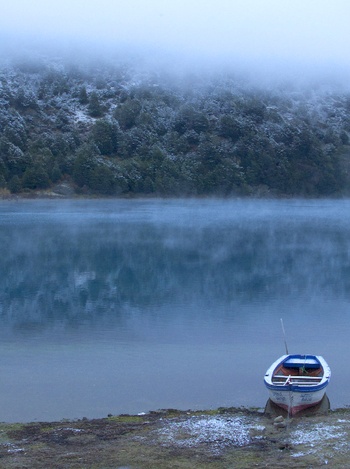
On the desk in front of us, the screensaver on Tompkins’s MacBook cycled through aerial shots of ice-coated mountains and twisting fjords and rivers, close-ups of birds and hikers in rubber boots.
“We’re not believers in the myth of progress,” he continued, his lecture unfolding without pause. “This requires systemic analysis and gives us an entirely different view of development. It’s common sense that the world has gone awfully wrong. We need a major rethink of what development means.”
At one point, Tompkins’s eyes drifted behind me. He switched from English to Spanish mid-sentence in order to advise one of the office employees hanging a framed picture of a puma in one corner of the office.
“A little bit higher,” Tompkins said. “And I think that color is off.”
The framed picture came down.
“Look at how fast technology is developing,” he said. “Everyone says, ‘They’ll think of something. They’ll think of something to solve every crisis, they’ll solve waste with something. It’ll be digital and fly through the air.’”
He paused and asked if I had a cell phone. I nodded sheepishly, my only participation during Tompkins’s hour-long lecture.
“I don’t have a cell phone because I know how horrible it is,” he said. “Using your cell phone is like putting your head in a microwave every day.
“What are they going to do now that the economy and everyone is addicted to and dependent on technology?” he continued. According to Tompkins, Steve Jobs had believed in the myth of progress and used to publish ad campaigns with a long list of the reasons why computers were going to revolutionize the world. When Jobs would come over to Tompkins’s house for dinner, Tompkins would tell him that his campaign had mentioned only 5 percent of what computers were doing—he’d forgotten to mention the other 95 percent that encompassed the harm they caused.
“It’s like God,” Tompkins said. “When they’re growing up, if you tell kids God exists, they believe it. It’s the same with the techno-cultural society. They believe in it—that it’s the road to paradise, that there are no limits.”
He raised his eyebrows, deepening the lines in his forehead.
“A lot of people, in your generation in particular, are starting to see where it’s going. The organic food movement, the Occupy movement—they’re all trying to pull the brakes. The environmental and social-justice movements, less so. They still want progress so they can spread the wealth around after,” he said.
He placed particularly skeptical emphasis on the word “progress.”
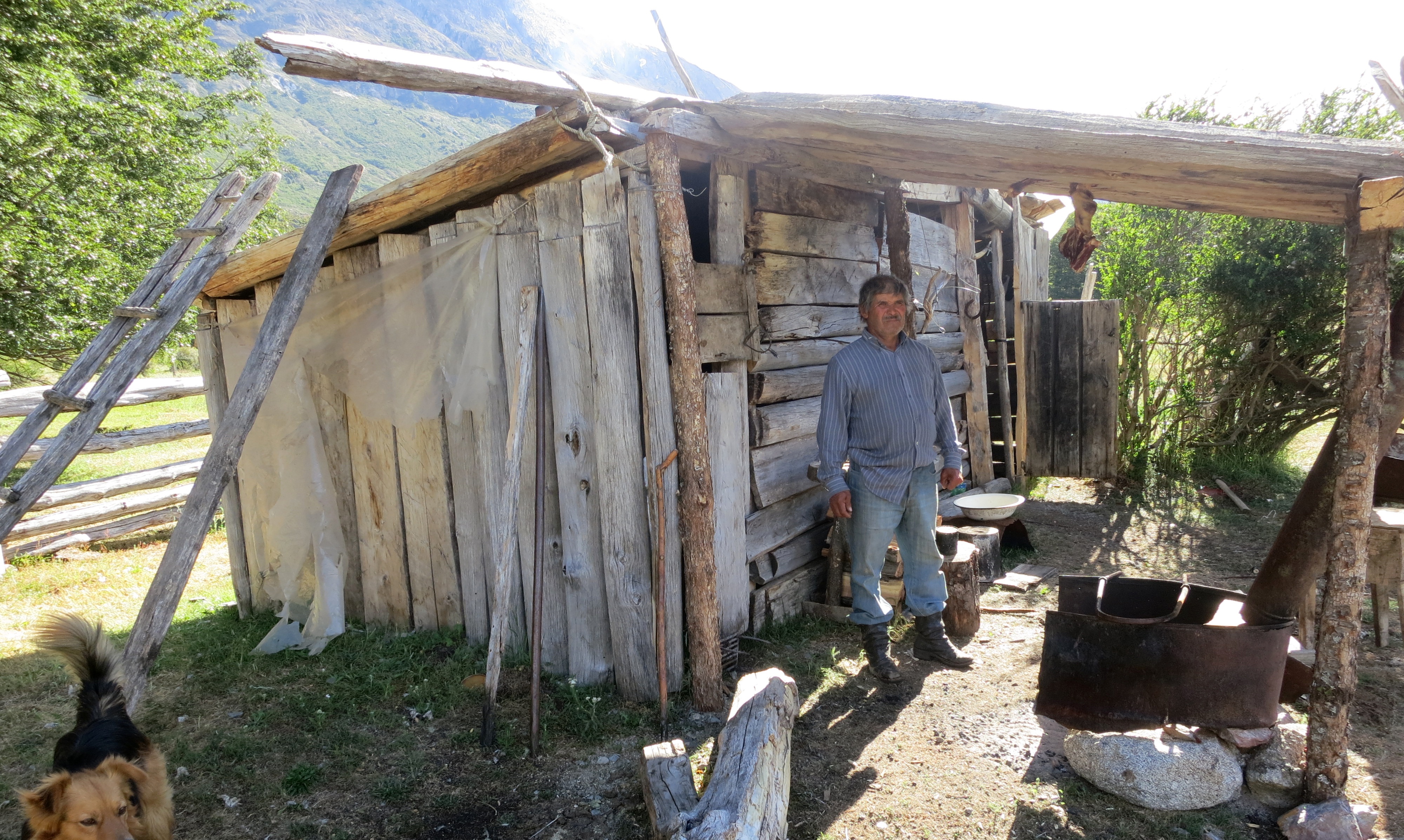
While many of the region’s gauchos live in simple one-room wood cabins in the forests, the Tompkinses have built their new park infrastructure in stone. These large stone buildings have stirred particular unrest and suspicion around the Chacabuco Valley. When I challenged the regional rumors about the Valley—especially that Tompkins was building a second Jewish homeland—people would lift their eyebrows and ask, “Well, if he’s building a park, why does he need such fancy houses?”
While in Cochrane, the town nearest to the Valley, I met a café owner, Teresa Catalan. We started talking about the Valley, and she found pictures of the stone buildings on Google Images to show me.
“See?” she said, looking from me to the screen. “It bothers me that they call it the Patagonia Park because there’s no Patagonian identity in it. You see the buildings and it looks like you’re in London! It’s the same in Amarillo—what they did to the houses there. It’s not Patagonian. It looks like you’re in Germany.”
A young lawyer who worked at the park for several years, Josefina Ruiz, called the park “an island” in Aysén, the region where it is situated.
“How can you have someone who talks about localism—he’s invited to universities to talk about the local economy—and he wouldn’t be recognized in Cochrane?” she said, talking about Tompkins. “He never goes to the supermarket there. He comes in on his little plane and goes to his house, then goes to Santiago and stays in a hotel, then leaves.”
The local distrust is largely fueled by the sensitivity of the place where the new park sits. In its ranching days, the Valley was home to the third largest sheep ranch in Chile. It was Belgian-owned, but it employed numerous Chilean workers; the town of Cochrane originally formed to house families who had moved there. After Tompkins bought the land, the exodus of sheep and cows from the Valley caused bitter resentment. Conservación Patagonica has employed plenty of locals, but the work of weeding invasive plants and removing fences doesn’t tap into the same sense of regional identity as shearing sheep and running cattle.
This past October, resentment toward the new Tompkins park gave way to resistance: Ranchers from neighboring towns protested by the façade of the stone restaurant in the Valley. They drove their trucks onto the grassy front yard, barbecued several lambs over an open fire, and shouted into megaphones about gringos in general and the Tompkinses in particular. They wore wool sweaters, leather boots, and ubiquitous gaucho-style berets called boinas. Tompkins never showed his face, but the ranchers stood their ground on his all day. Stickers on trucks depicted a silhouetted gaucho in a woolen poncho riding on horseback below snow-topped mountains and vivid blue skies, evoking the romantic landscape the protestors call home, full of granite spires and teal lakes, renowned for its winds and frequently referred to as the end of the world. Several posters read, Patagonia Sin Tompkins, or Patagonia Without Tompkins.
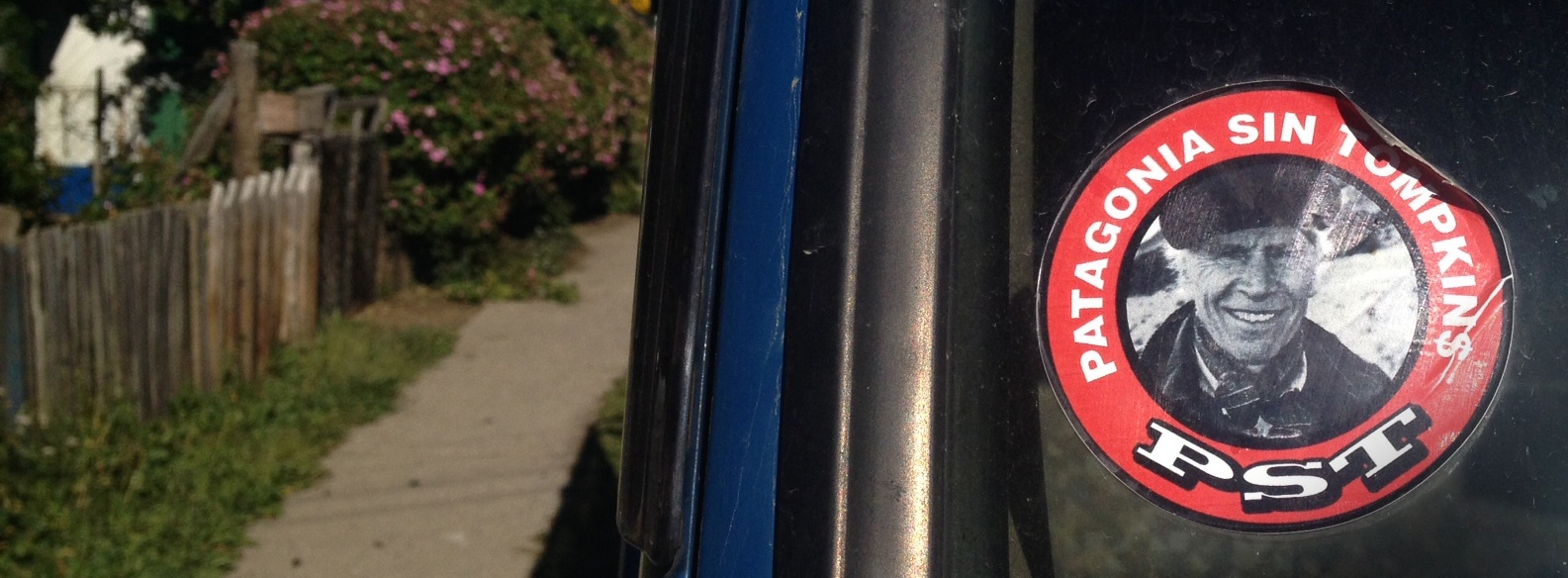
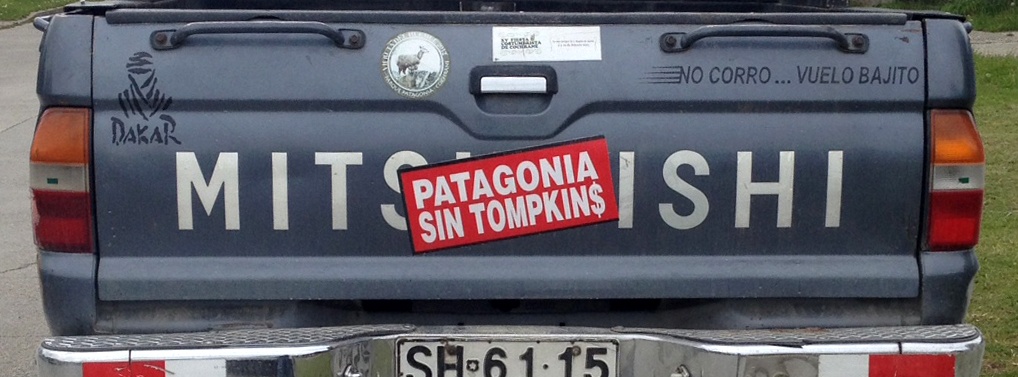
At one point, though, a picture of the protest held in the Valley flashed across the screen. Immediately, the room filled with energy, attention, and applause. Clearly, attendees could rally behind an anti-Tompkins campaign. Applause broke out again whenever Tompkins-related goals arose. Some of these popular group objectives were “Reject the massive purchases of land by foreigners,” “Reject conservation on productive land,” and “Request the state to restore the ranch in the Chacabuco Valley to the children of the Baker [River] as a productive livestock area.” This last goal garnered the most fervent applause.
While most attendees were there to halt the gringo land grab and bring sheep back to the Valley, the leaders of La Voz had a few other goals in mind for the group. The objectives ignored by the crowd contained thinly veiled support of the controversial HidroAysén—a massive five-dam project that the Chilean government had suspended in 2012 after massive nationwide protests. One objective read, “Support all private investment that means development for our people”; another touted “permanent benefits for the region if HidroAysén, or other hydroelectric or mining projects, go through in those places.”
When La Voz first began in 2013, it was more up front about its agenda: It originally had “hydroelectricity and development” as a subtitle on one of its stickers. The sticker, which featured a poncho-clad, silhouetted gaucho, evolved to read, “La Voz de la Patagonia: Intervening for Our Aysén Heritage.” In its effort to win support, HidroAysén has created local radio programs, grants and scholarships for students and small businesses, and door-to-door campaigns. The company funded a celebratory “day of the sheep.”
Since Tompkins is locally loathed, HidroAysén supported La Voz when it began presenting itself as a popular uprising against his conservation work. After that, La Voz gained momentum more quickly. After only a month or two in existence, the group collected 1,000 signatures of support. (Around 3,000 people live in Cochrane.)
Many Voz supporters I met were, in fact, against the dams; they believed that the group’s focus was Tompkins, and denied HidroAysén’s influence on the organization. Some of those people were against Tompkins for the same reasons they were against HidroAysén: Both were outsiders. “To me, they’re the same,” said Marcos Millahonu, a young man from Cochrane who attended the Voz protest in the Valley. “They are both private parties with private interests. One doesn’t want the dams because it’d interfere with his property, and the other wants to build dams to make money.”
The public relations director of HidroAysén, María Irene Soto, is a middle-aged woman with wrists adorned in bracelets and eyes lined in kohl. I have met her on two occasions. Both times, she began by reciting the details of the dams. She talked about the small size of the floods, the mere handful of families who would be displaced, and best of all, the fact that the dam would last 500 years. Then, she steered our conversation toward Tompkins, saying that the only reason there was such massive local, national, and international resistance to the dams was because one rich gringo had singlehandedly financed the campaign against the project.
“The people don’t like Tompkins,” she said. “And the people can’t defend themselves because he’s very powerful.” Hearing her speak, one would hardly have guessed that she represented a largely Italian and Spanish-owned energy company whose multi-billion dollar dam project would have halted two wild rivers and sent the energy they generated more than 1,000 miles to the north, leaving none of it in the region. (The Chilean government ultimately rejected the proposal this summer.)
“It’s hard to fight with Tompkins,” she continued, shaking her head. “There’s no way.”
On María’s Twitter account, she has a picture of the president of La Voz, Carlos Olivares, sitting by a woodstove and looking at the group’s book of signatures. I met Olivares in Cochrane’s plaza a few days after the bingo fundraiser. He is a balding, sturdy man with a straightforward quality that kept his gait quick and his conversation to the point. He insisted that he was vocalizing the needs of the people, especially the gauchos—representing those who could not represent themselves. He described the Valley as the most fertile land in the region, emphasizing that it wasn’t fair for so many other gauchos to have to scrape by on ranches high in the mountains where grass hardly grew when the Valley was left “unused.” Carlos doesn’t want the land to be gazed at; he wants it to be grazed.
People often threw around variants of the term “deep ecology“ during tirades against Tompkins, though I was rarely sure what people understood it to mean. I asked Olivares to elaborate.
“It means he doesn’t accept anything,” he said. “I mean anything. Just flora and fauna. He erases buildings, fences, people around him. He doesn’t want people nearby.”
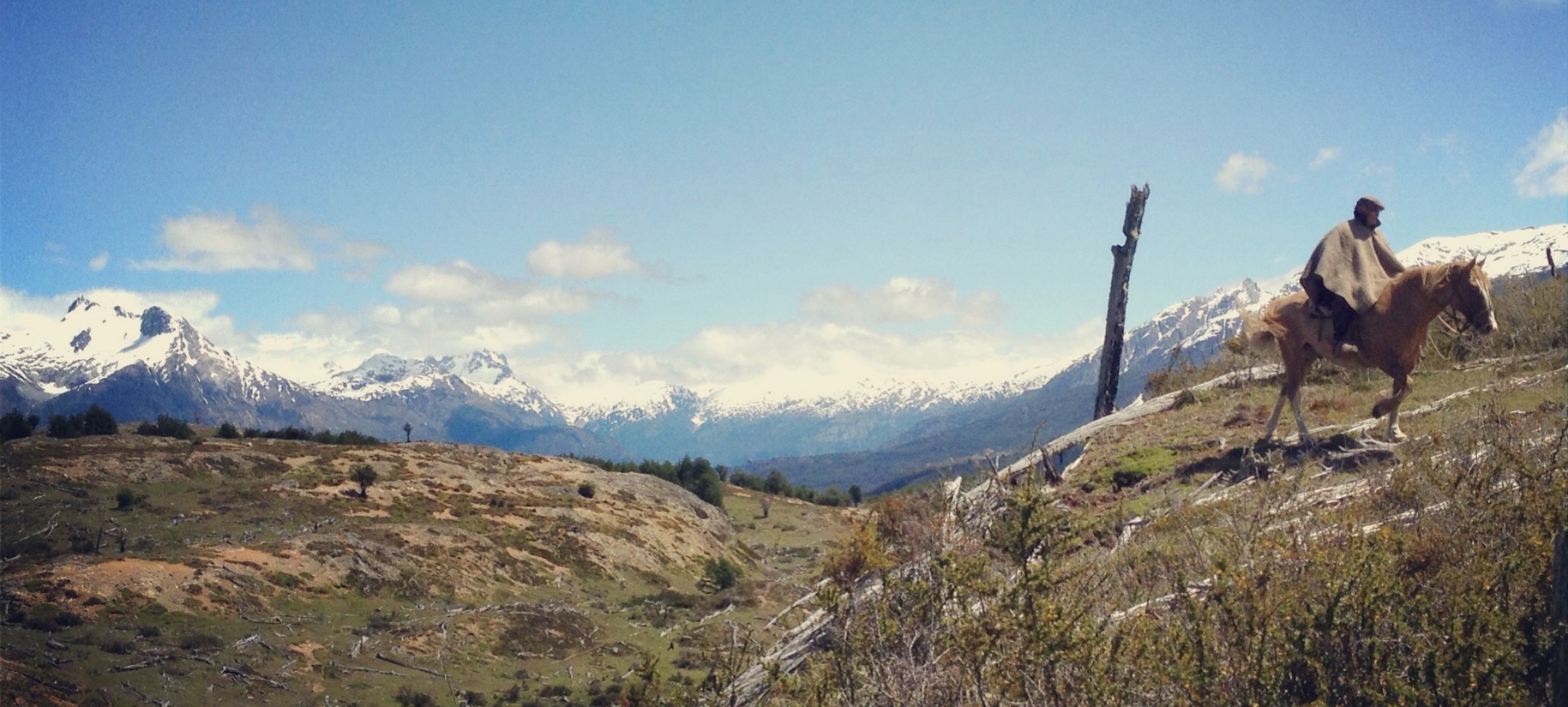
After hearing La Voz leaders and others talk about the gauchos, I wanted to speak to them myself. So I went off the road and set off on horseback through the jagged peaks and turquoise rivers of the region. The slanted light of late day descended in shafts from the clouds as I rode through the open pastures toward Porta Suelo, a ranch belonging to Gabino and Norma Diaz. The wind had blown the clouds until their edges blurred. Burnt logs striped the ground on which we rode; to clear the land so that their cows and sheep could graze, ranchers had set fire to the forests.
Inside the Diazes’ small wood-shingled cabin, we sat at the table facing the window drinking cups of fresh milk. After one stretch of silence, Gabino mentioned that other gauchos nearby were selling.
“To whom?” I asked.
“To anyone—to people from Santiago, to foreigners, to the people who have money. There’s no shortage of people with money. But I don’t sell,” he said. “To me, what matters is having land. Here, I have my work. I have my things to do. I have my life, and it’s tranquilo. And what I do is my own idea. If we want to go gather wood, that’s what we do. If I want to build a fence, that’s what I do. I’m not a pawn. I have my own place.”
Tranquilo was a word I heard often in Aysén. It was a way to comment on a shared silence—¡Qué tranquilo! How peaceful! It was a way gauchos introduced their homes—¿Muy tranquilo acá, cierto? Isn’t it calm here? It was a way people assumed Aysén was different from my home—¿Te gusta la tranquilidad acá? Do you like the quiet here? The word encapsulated what many Ayséninos most treasure about the place where they live, what many believe differentiates them from the rest of the world, even if they have never left the region. It is what some are afraid to lose if too many outsiders arrive with vacation homes or parks or dams.
The next day, we headed along an old trail through the forest and across the valley to run cows to their summer pasture. After a few hours, we stopped at a neighbor’s house. We sat on a row of benches outside. Gabino took off his cap, the crown of which read La Ruta del Huemul 2013, and placed the hat on his knee. The Route of the Huemul is the name of an event Conservación Patagonica puts on each year—huemules are an endangered species of deer, and the event involves hiking through the park and learning about their life cycle. Gabino pointed at the hat, and told me, “That’s where Tompkins is, with all his pumas and foxes.” Among ranchers, Tompkins’s commitment to protecting these livestock predators is one of the main objections to the park. Throughout the region, hundreds of miles away, I heard Tompkins blamed for every puma-killed sheep.
I asked Gabino if he had done the Route of the Huemul, and he laughed, and said, no. (In Aysén, items bearing various promotional logos are often passed around or given away for free.)
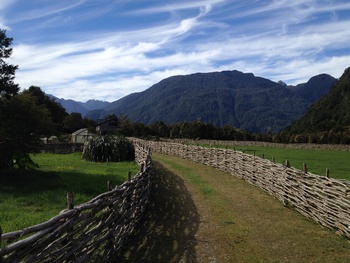
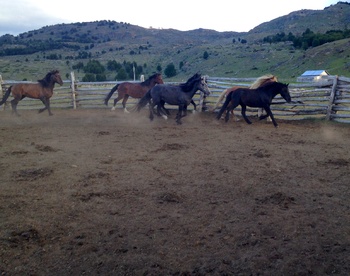
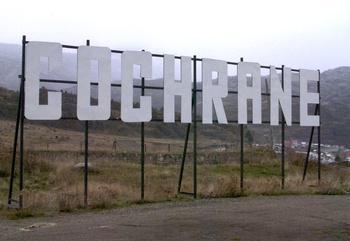
“I haven’t been there since it was a ranch,” he said.
I said that it seemed like people in Cochrane didn’t like Tompkins.
“Look,” Gabino said, “He works in a different issue. He doesn’t work with animals.”
“He works with fauna,” another gaucho, Ramón, said mockingly.
“But he bought the land and paid for it,” Gabino said. “It’s his. It’s the government’s fault in the end. It’s the same with HidroAysén. If the government wants it, it will happen. And people here think lots of things, but it’s the government that will decide in the end. And there’s nothing we can do now with Tompkins. The government let him buy the land.”
“He bought it, he paid for it,” Ramón repeated, wiping his palms together.
A few nights later, I sat with Gabino and Norma around the woodstove, drinking maté, talking about the gringo invasion of Patagonia. Germans had purchased a ranch nearby. Gabino and Norma have hosted a couple of students from the Wyoming-based National Outdoor Leadership School, and Norma mentioned that they had probably come to the region in search of real estate.
“They’re just teenagers, Norma,” Gabino said.
Norma then nodded at me, asking if I was trying to buy land, too.
I shook my head, saying that I was just visiting.
The next morning, the three of us rode along a trail to meet Gabino’s brother, Porfirio, at the fence where the road began. On our way back to town, Porfirio told me about a horseback ride he was trying to plan to celebrate gaucho traditions in the region. A few years before, Porfirio had helped organize another event, which was one of the major protests against the dams—a more-than-200-mile ride from Cochrane to the regional capital of Coyhaique. He told me he hadn’t asked the Tompkinses for money this time, as he had for his previous ride. When the pair had contributed last time, Porfirio said the ride was taken over by gringos. Ever since, people who were pro-dam had used the gringo presence as a way to dismiss the protest altogether. La Voz continually emphasized that none of its signees were foreigners; they were all from Aysén.
“When we were doing the horseback ride, I said to Gabino, ‘This is a fight between two big dogs, and we are just little dogs running around them,’” Porfirio told me. “The media makes it seem like the resistance to HidroAysén is all because of Tompkins, but this is our fight. There are people here who really want to defend our land, our culture, what we have here.”
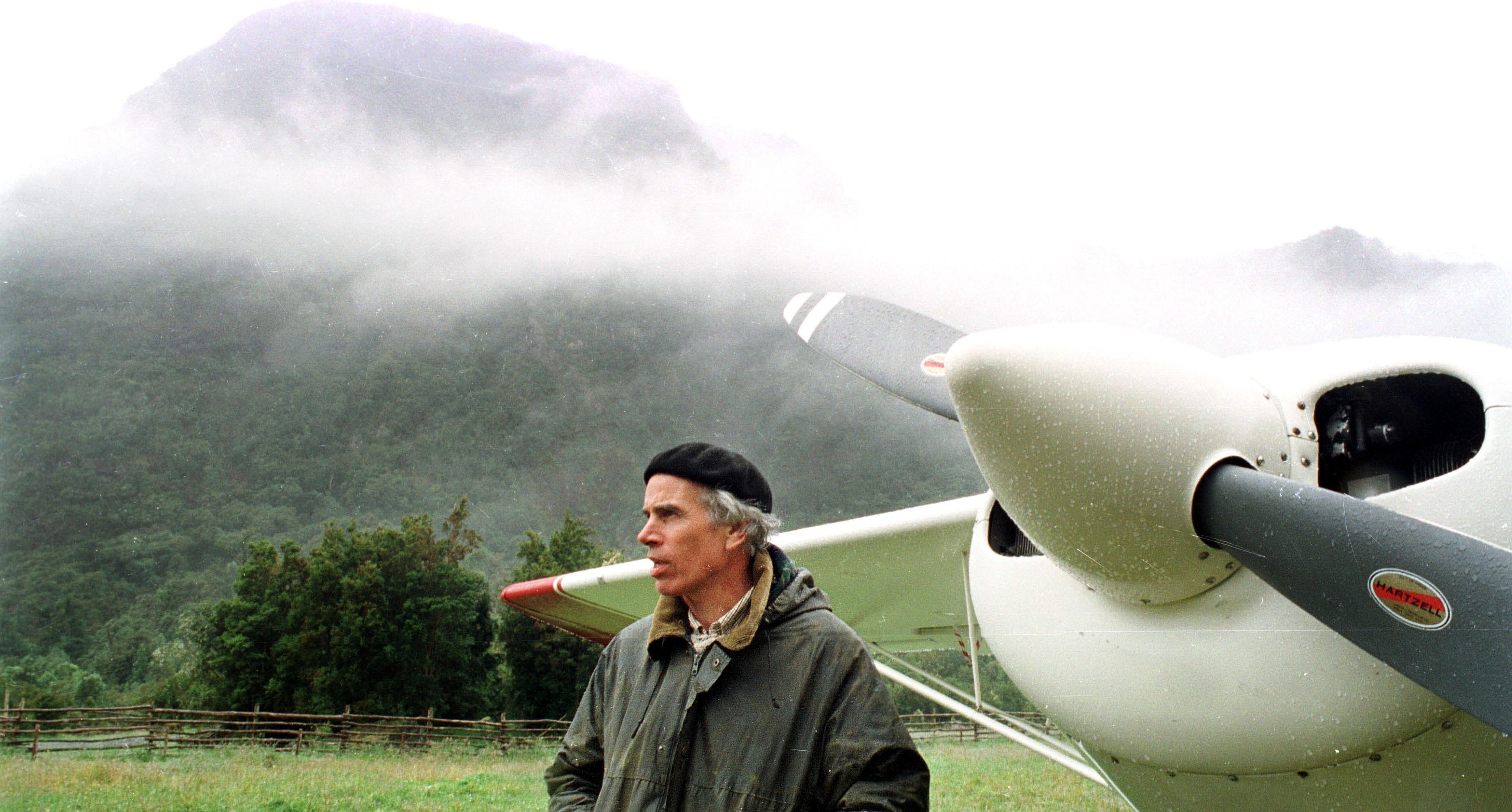
The rumors and resistance have hardly slowed the progress of the Tompkins’s project. One afternoon, I went to speak with Tompkins at the Butler House, where he and his friends stay when they’re in the Valley. I found him sitting alone at a long table in his living room, staring at his laptop. Three large portraits of pumas covered the wall. They faced a fireplace, above which stood a wood carving of a puma.
I mentioned the fierce criticism I’d heard in Cochrane, and Tompkins immediately replied that Cochrane had been settled only 60 or 70 years before and that there weren’t any great sages coming out of there. He called Cochrane’s mayor a “right-wing xenophobe who’s not too smart.”
“When I talk to him, he talks to me like I know nothing about ranching,” Tompkins said, complaining that he “gets shit” from local guys who think he isn’t a rancher, despite the fact that he and Kris manage agriculture restoration projects, separate from their parks, that involve thousands of sheep and tens of thousands of cows.
“You ask him about overgrazing, and he denies it,” Tompkins said, beginning another diatribe. “He’s an overgrazing denier.”
Tompkins mentioned the ranch that belongs to Robustiano Gonzalez, one of his only remaining neighbors in the Valley. He and Kris bought up many of the small ranches in the area after their initial purchase, but Robustiano has continually refused to sell. Tompkins told me to look at his ranch at the end of the summer—it would be eroded and bare, everything blown away.
“This Valley was overgrazed. That’s the story of Patagonia. Twenty-five to 30 percent of Patagonia is desertified. It doesn’t take a Rhodes Scholar or a Yale student to see that.”
He said that the way gauchos like Robustiano stand up for their traditions is “all well and good,” but only if their way of life matches the ecological reality of the place where they live.
“The rest is the fantasy and dreams of the community. It’s irrelevant to Mother Nature.”
Tompkins pointed out that conservation projects all over the world face the kind of resistance he’s facing. He mentioned that he had been to more than 130 countries, and said that similar protests have cropped up in Romania, in the Serengeti, in the United States. To reassure his employees, he has them watch The National Parks: America’s Best Ideas, a six-part Ken Burns series that aired on PBS. He tells them to pay particular attention to the story of the Tetons and John D. Rockefeller Jr., son of the founder of Standard Oil.
When Congress set aside the Teton Mountains for Yellowstone in 1929, Rockefeller began anonymously purchasing land in the valley near the range in the hopes that it would eventually be added to the national park. Reluctant to have more land under the federal government’s control, Wyoming politicians tried to impede Rockefeller’s plan to expand the nascent park—and succeeded for 15 years, until Rockefeller sent a letter to the White House. In 1943, Roosevelt responded, turning this private land into a national monument. Some local ranchers were so mad that they marched with arms and 500 head of cattle across this new monument without a permit—a tactic similar to the “invasion” Carlos Olivares told me some members of La Voz want to launch in the Valley if the Chilean government doesn’t respond to their nonviolent protest.
Needless to say, Rockefeller was later vindicated and is now venerated for the mark he made on the landscape. Showing his staff the documentary is Tompkins’s way of saying, “I, too, will prevail—just give me a few decades.”
Kris has been more bothered than her husband by the “Patagonia Without Tompkins” movement in town. She told me that when they first moved to Pumalín, there were military planes strafing their house and death threats for her husband. Neighbors accused them of building a site for nuclear waste.
“It was hard to get out of bed,” she said.
She said she regrets the lack of contact that fueled the distrust and misunderstanding. “The work with the community started slow,” she said. “We felt like we didn’t want to bring people until there was something to see—the buildings, the trails. So we didn’t have as many events. What was someone going to see? Sticks and stones here?
“But what can you do?” she continued. “There are some people that want this to be a sheep ranch. It doesn’t matter. I just have to remember that in 100 years—10, 20—people won’t be able to imagine this not being a park.”
Kris’s team has been trying to demystify their project by bringing local high school kids to the park to hike and camp, and training others from Cochrane who want to be guides once the park opens. Young people tend to be more open to the idea of the park than their parents—giving those at Conservación Patagonica hope that the next generation in Cochrane will accept and benefit from their project.
In the meantime, park employees have learned how to respond to the local resentment. When I met with Nadine Lehner, the executive director ofConservacion Patagonica, I mentioned that people in town, like Teresa the café owner, often complained that the buildings Tompkins so obsessed over didn’t fit into the region’s identity.
“A world-class tourism destination takes a world-class brand,” replied Lehner, a 26-year-old Harvard graduate with dark hair and a chic summer style I wasn’t used to seeing in Aysén: colored jeans and tucked-in tank tops. “It’s not what some guy in Cochrane would suggest. I don’t think Yellowstone’s success was based on what locals thought about it 10 years in.”
We were sitting side-by-side facing a window in the park’s office. Nearby, a series of coffee-table books whose titles all began with the words The Tragedy of… sat stacked on a dark wood table. They had been published by the Foundation for Deep Ecology, of which Tompkins is president, and were about various environmental disasters.
“A lot of conservation work in the U.S. is boring,” Lehner continued. “We had someone here from the Princeton Land Trust, and he was like, ‘We just saved 100 acres!’ We were like, ‘Great! Now you have a place to walk your dogs!’”
I pointed to the books, and mentioned that they presented contradicting messages about the gauchos: One of them blamed the gauchos for burning the native Chilean forest, while another, about the anti-dam movement, praised the gaucho way of life and demanded it be preserved.
“When Doug wants to get something done, he will use different reasons to get that done,” Lehner explained. “But Doug has the same contempt for all humanity. He has the same contempt for New York City.”
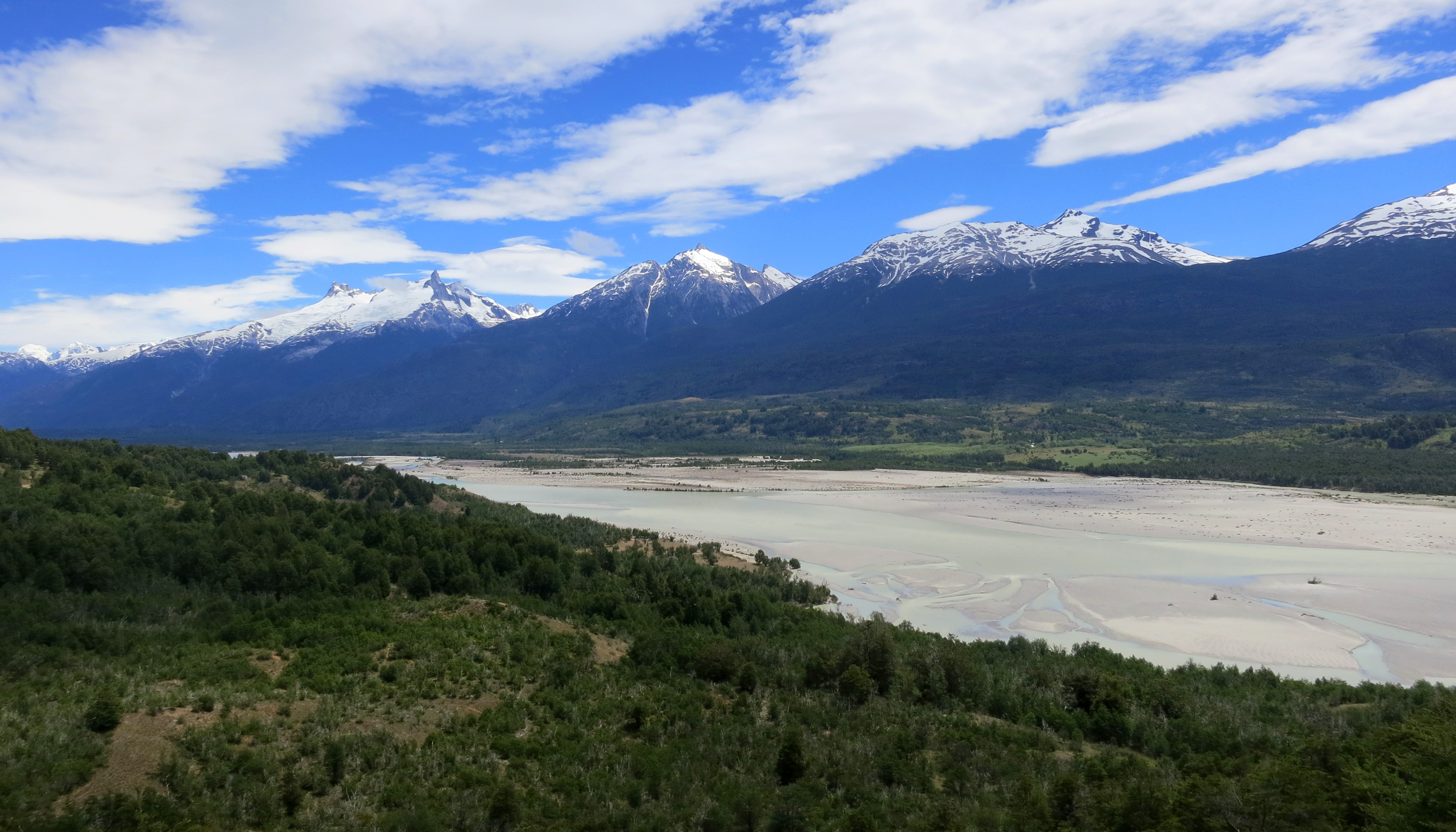
In January, four friends and I were stranded on a remote beach during a sea-kayaking trip on a windswept fjord just south of the Valley. We were five days overdue and had no way to communicate to our families that we were alive. When we eventually reached a gaucho’s cabin with a ham radio, we tried to call the nearest municipality so they could contact the wife of one of the kayakers in our crew. No one at the municipality responded. Eventually, an unidentified voice came onto the radio and offered to carry the communication.
Our message to Claudia, the wife in question, later ricocheted between ranches in the region. It went over the northern ice field to a ranch in the Colonia Valley, up the Baker River to another ranch in Puerto Bertrand, then down the southern highway to the municipality in Cochrane, where somebody in the office texted Claudia and told her we were alive. Claudia then emailed the parents of one of the other kayakers in our crew who is from Colorado, who in turn emailed their old friends Doug and Kris Tompkins, who were in the Butler House in the Valley.
When Kris opened the email, Tompkins was walking out the door, striding toward his plane, which he was planning to fly south to look for our fleet of brightly colored kayaks. He had heard from the parents of Weston, the kayaker from Colorado, that their son was missing, and he’d decided to take matters into his own hands, flying his tiny plane through the rugged winds at the edge of the Pacific.
My parents, Weston’s parents, and Claudia had each looked for help from near and faraway friends. They had turned to each other, to nearby boat owners, to a librarian in Cochrane, to the local police, to the senator of Aysén. Tompkins had turned to no one but himself.
His brand of self-reliance brings to mind some of his literary heroes, such as Henry David Thoreau. In Walden, Thoreau writes, “No man ever followed his genius till it misled him.” Despite the potential consequences of leading such a life, Thoreau insists it is “in conformity to higher principles.” In Beyond the Wall, Abbey writes, “Sentiment without action is the ruin of the soul.” Tompkins has obeyed these writers; he has lived according to his principles. He has taken action.
But the proportions of Tompkins’s actions are much vaster than those of the writers whose words moved him. Tompkins hasn’t occupied a small sector of the woods and set out to live deliberately; he has purchased more acres in Chile and Argentina than exist in the state of Delaware. In doing so, he has dismissed the complaints of his neighbors, assuming that, like the group of curmudgeonly ranchers near the Tetons, they will eventually adopt his vision and be grateful.
Part of why Tompkins ignores these complaints is that he sees them as short-sighted, while his own vision goes far beyond the time he will spend on Earth. In their book Land Ethics, the Tompkinses write that they don’t consider themselves landowners—even though they have purchased more land than nearly anyone else in the world. On a geological timescale, they write, the short moment in which they hold titles to the land is “nothing more than a wink of an eye.”
In such a view, the tribulations the Tompkinses have faced in the Valley—the conspiracy theories, the Voz resistance, the rancher resentment, the accusations about the gringo land buy-up—are ephemeral, while the preservation of wild landscapes and endangered species endures millennia. The back page of Wildlands Philanthropy, a book published by The Foundation for Deep Ecology, is a wide expanse of white with a short quote attributed to Abraham Lincoln: “Laws change; people die; the land remains.”
Before Tompkins reached his plane, though, Kris ran outside to stop him. She told him that we were fine; he didn’t need to look for us. He shrugged, saying it was good that he had heard before he left—he would save some gas. He then got into his plane and headed north to Pumalín, where his real rescue mission was under way. We could save ourselves, at least for a little while, but who else besides Tompkins would save that rainforest-cloaked coast of steep mountains? Who else would save the beautiful land at the end of the world?
He flew over the gauchos and gringos he was too high to see, over the sheep and cows, over the huemules and pumas, over the burnt valleys and forested hills, over the mountains and rivers, over the Corcovado National Park, over the northern ice field, over the Pacific coast—into the wild sky and out of sight, in nothing more than a wink of an eye.
http://www.theatlantic.com/features/archive/2014/09/the-entrepreneur-who-wants-to-save-paradise/380116/
Tags: Argentina, beautiful wilderness, Chile, Conservación Patagonica, Corcovado National Park, deep ecology, Douglas Tompkins, Esprit, Fundación Pumalín, Fundación Yendegaia, HidroAysén, La Voz leaders, large-scale conservation, national parks, onservation in Chile, outdoor gear, The Conservation Land Trust, The Foundation for Deep Ecology, The North Face, Tompkins Conservation, Tompkins’s project.s
 Oxstones Investment Club™
Oxstones Investment Club™